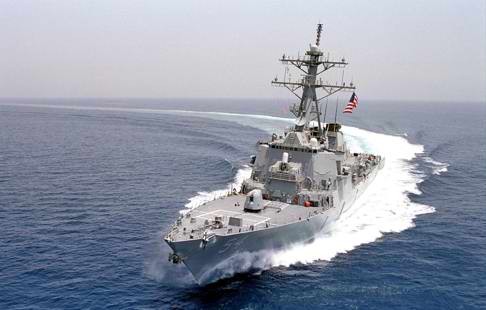The good, bad and downright ugly aspects of US naval operations in the South China Sea
Mark Valencia says the US navy’s ‘freedom of navigation’ operations close to the disputed Spratly and Paracel islands are proving controversial, not least for China, and Washington’s allies are wary of joining in


READ MORE: PLA garrison ‘warns off’ US Navy destroyer sailing close to island in disputed area of South China Sea
According to the US Department of Defence this operation “challenged attempts by the three claimants, China, Taiwan and Vietnam, to restrict navigation rights and freedoms around the features ... The excessive claims regarding Triton Island are inconsistent with international law as reflected in the Law of the Sea Convention ... No claimants were notified prior to the transit which is consistent with our normal process and international law.”

Both operations challenged China’s requirement of prior permission for warships to enter its territorial sea
The good: The US argues that it is defending a universally accepted principle that is critical to trade. It says it is providing a “free good” in protecting freedom of navigation for all. Behind its lofty rhetoric, the US is clearly challenging attempts by China and others to unilaterally interpret or change international law to their benefit. These operations were supported by its allies – the Philippines, Japan, South Korea and Australia – and by Vietnam – all of which have their own maritime concerns with a militarily burgeoning China. Both operations challenged not just China’s requirement of prior permission for warships to enter its territorial sea but also the prior notification requirements of Vietnam and Taiwan, which also claim these features. The Curtis Wilbur operation also challenged China’s baselines drawn around the Paracels – a claim that has no basis in the UN Convention on the Law of the Sea (Unclos).
These operations demonstrated that the US is truly trying to uphold international law, or its interpretation thereof, rather than single out and provoke China. In one interpretation of “good”, the US is trying to dissuade China from deploying advanced weapons to the features it controls. The Curtis Wilbur operation was relatively “soft” compared to that of the USS Lassen, which may account for China’s subdued response. It is even possible that a conflict-avoidance regime is forming between the two rivals regarding these operations.

The Lassen freedom of navigation operation was confused and confusing
But the Lassen freedom of navigation operation was confused and confusing. Moreover, its message was muddled. It was unclear which excessive claim by whom was being challenged. The Curtis Wilbur operation was much clearer and less provocative in that the vessel followed a major shipping route rather than going out of its way to make its point like the Lassen.